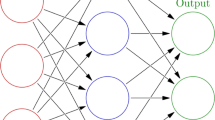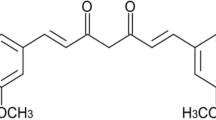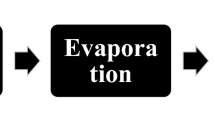Abstract
Food fraud, including adulteration, addition, tampering, and misrepresentation of food ingredients and packaging for improper economic profit, has been global concerns affecting public health and safety. In South Korea, counterfeit expression of solar salt has been a problem causing improper economic profit, especially for those products produced from China, but labeled as ‘domestics’. In this study, we were tried to discriminate geographical origins of solar salt between South Korea and China through various analytical techniques, the determination of moisture and sodium chloride contents, multi-elemental analysis, and isotope analysis. With the application of a statistical analysis, more than 93.3% of discrimination capability of positive classification was achieved in this study.



Similar content being viewed by others
References
Fisheries MoOa. All about solar salts. Available from: http://www.mof.go.kr. Accessed July 3, 2015.
Fortin ND. Food Regulation: Law, Science, Policy, and Practice. Wiley, New York (2016)
Heo O-S, Oh S-H, Shin H-S, Kim M-R. Mineral and heavy metal contents of salt and salted-fermented shrimp. Korean J. Food Sci. Technol. 37: 519-524 (2005)
Jin Y-X, Je J-H, Lee Y-H, Kim J-H, Cho Y-S, Kim S-Y. Comparison of the mineral contents of sun-dried salt depending on wet digestion and dissolution. Korean J. Food Preserv. 18: 993-997 (2011)
Jo E, Shin D. Study on the chemical compositions of sun-dried, refined, and processed salt produced in chonbuk area. J. Fd. Hyg. Safety 13: 360-364 (1998)
Kelly S, Heaton K, Hoogewerff J. Tracing the geographical origin of food: the application of multi-element and multi-isotope analysis. Trends Food Sci. Technol. 16: 555-567 (2005)
Kim H-L, Yoo Y-J, Lee I-S, Ko G-H, Kim I-C. Evaluation of heavy metal contents in mudflat solar salt, salt water, and sea water in the nationwide salt pan. J. Korean Soc. Food Sci. Nutr. 41: 1014-1019 (2012)
Kim J-B, Won H-Y, Kim S-N, Kim S-Y, Cho Y-S, Cho S-M, Kim S-Y, Kim H-W. Development of technique for determination of domestic and imported salt. National Institute of Agricultural Science, Research task report (2013)
Lee K-D, Park J-W, Choi C-R, Song H-W, Yun S-K, Yang H-C, Ham K-S. Salinity and heavy metal contents of solar salts produced in Jeollanamdo province of Korea. J. Korean Soc. Food Sci. Nutr. 36: 753-758 (2007)
Lee HM, Lee WK, Jin JH, & Kim IC. Physicochemical properties and microbial analysis of korean solar salt and flower of salt. J. Korean Soc. Food Sci. Nutr. 42: 1115-1124 (2013)
Park J-W, Kim S-J, Kim S-H, Kim B-H, Kang S-G, Nam S-H, Jung S-T. Determination of mineral and heavy metal contents of various salts. Korean J. Food Sci. Technol. 32: 1442-1445 (2000)
Seo J-H, Kim H-J, Lee S-P. Evaluation of the chemical compositions of solar salts produced in Korea. Korean J. Food Preserv. 19: 554-559 (2012)
Shin T-S, Park C-K, Lee S-H, Han K-H. Effects of age on chemical composition in sun-dried salts. Korean J. Food Sci. Technol. 37: 312-317 (2005)
Spink J, Moyer DC. Defining the public health threat of food fraud. J. Food Sci. 76: R157-R163 (2011).
Spink J, Moyer DC. Understanding and combating food fraud. Food Technol. 67: 30-35 (2013)
Yang H-C, Choi G-C, Ahn Y-J, Yoon K-B, Park B-J, Jeong S-H, Han K-S. Methods for distinguishing Jeollanam-do solar salt and imported solar salts. Jeollanam-Do Institute of Health and Environment, Research publication (2009)
Acknowledgements
This study was supported by National Forensic Service (NFS2014DNT02), Ministry of the Interior and Safety, Republic of Korea.
Author information
Authors and Affiliations
Corresponding author
Additional information
Publisher's Note
Springer Nature remains neutral with regard to jurisdictional claims in published maps and institutional affiliations.
Rights and permissions
About this article
Cite this article
Min, S., Kim, H.J., Gwak, S. et al. Comprehensive analysis to determine the differences of solar salt produced in South Korea and China. Food Sci Biotechnol 29, 323–329 (2020). https://doi.org/10.1007/s10068-019-00664-y
Received:
Revised:
Accepted:
Published:
Issue Date:
DOI: https://doi.org/10.1007/s10068-019-00664-y




